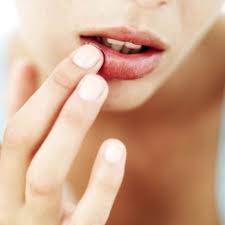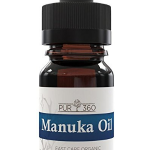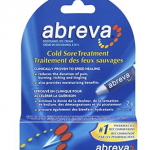Are Cold Sores Contagious
 These cold sore Lips…..the cold sores keep coming back
These cold sore Lips…..the cold sores keep coming back
Cold sores continue to come back over and over again, because they are a virus.
How can I get rid of cold sore lips?
Are Cold Sores Contagious? – Yes they are, they are sometimes called fever blisters, they are caused by the Herpes Simples 1 virus (HSV-1)
These cold sores can appear as a single blister or as a cluster, and they usually reacure in the same location, this is usually around your lips, nose, chin or cheeks.
Cold sores are often confused with canker sores, but canker sores are a totally different, they are actual sores or ulcers that are found on the inside of your mouth and they are not contagious.
Why these cold sores keep coming back
Here are some statistics on this virus
- Known as Herpes simplex virus – there are two types HSV-1 and HSV-2
- HSV-1, which is the most common type usually causes cold sores (oral herpes)
- HSV2 – is not as common, this type usually causes genital herpes.
- Approximately 80 percent of the adult population have anitbodies against HSV-1 in their blood, which means they have already been exposed to the virus
- Around 25 percent of the adult population have antibodies against HSV-1
- Approximately 1 in 5 North Americans will be affected by cold sores every year.
- People affected by cold sores will experience an average of 2 to 3 outbreaks a year.
- Adults usually become infected by the virus as children
- Once the virus enters your body it never leaves
- This virus will sleep or hibernate in your central nervous system, certain triggers can cause it to “wake up” causing cold sores
- Most often the triggers are stress, menstruation , sunlight, fever, dry chapped lips, or local skin trauma.
- About 20 percent of the people with HSV antibodies have recurrent attacks throughout their lives.
How is this virus transmitted
This virus can be passed on by close personal contact such as kissing.
Most people come into contact with the virus when young children between the ages of three and five.
Normally these children will not show any symptoms until they have passed puberty.
Cold sores keep coming back, but in other places?
It is important to remember that this is a virus that is contagious, enabling the virus to be passed form person to person and form one area of your body to another through skin to skin contact.
This can happen even when blisters are not present.
The virus is most often passed on by kissing or sex, as well as by hands or fingers touching a sore and then touching the other person. The virus can even be passed on by sharing cups, cans, glasses, eating utensils, towels and food.
So when a cold sore appears to be coming back, it could be some of the old ones (on that nerve) and a new one on a newly infected nerve.
A weakening of the body’s defences, due to a severe cold for example, can lead to a reactivation of the virus and a return of the blisters.
The blistering
This skin disorder is characterized by groups of fluid-filled blisters which appear on red swollen areas of the skin or on the mucous membranes. And mucous membranes are usually any of the body’s openings. The areas can be tender and painful.
The blisters heal without scarring but have a tendency to recur.
The virus invades the cells of the epidermis, the outer layer of the skin, it then travels from the epidermis along the nerve paths to the roots of the nerves where it becomes active.
The primary infection can progress in different ways.
Symptoms
Some people only have very mild symptoms or none at all.
The first outbreak starts one to two weeks after the virus has been contracted, it usually subsides on it’s own within a few weeks.
Later, if the virus is reactivated, the blisters will return, this is why cold sores keep coming back.
They have never really left, they just lay asleep until an something triggers them.
People who have suffered from cold sores will tell you that they can tell when they are coming back.
They will feel a tingling or burning, with redness, itching and pain around their lips or mouth. (this would be the first stages) this stage is sometimes called the prodromal symptoms.
This first stage can happen very quickly – from a few hours to a day or two. You might even go to bed and wake up to find you have a blister!
The next stage
That would be the formation of blisters, after the blister has developed, it breaks and a yellow crust forms. The sores become covered by scabs that, typically, fall off after 8 to 10 days.
The virus can spread until the sores are completely covered by scabs. Within a few days this falls off and will leave a pinkish colored skin that heals without a scar.
In children, the virus can infect the mouth and throat. The infection may be accompanied by a fever and general aches and pains.
Taking steps to guard against these viruses
To guard against these viruses, prevent them from occurring and to prevent the virus or cold sores from coming back or from being passed to other parts of your body or to other persons:
- use a lip moisturizer regularly to prevent your lips from becoming dry or chapped
- the same lip balm could spread the virus if the blister is in its contagious period
- try to avoid triggers such as stress or overexposure to the sun (get a sunburn, get a blister)
- limit your exposure to the sun or UV lamps, and always use a sunscreen lip balm with an SPF of at least 15
- during times of high stress, consider trying relaxation therapy
How to avoid viruses:
- avoid kissing and skin contact with people, especially children, while blisters are present
- avoid sharing food, cups, glasses, cans, utensils and towels when blisters are present
- keep your hands clean – washing them frequently to avoid passing on the virus or infecting other areas of your body.
- avoid direct contact with the sores. These can appear on every part of the body, including the fingers and genitals
- wash your hands after touching the lips
- its tempting, but avoid picking a the sores as this can spread the virus to other parts of the body or result in a bacterial infection of the sores.
- the body’s defences can be strengthened by a healthy lifestyle the factor which trigger outbreaks differ from person to person. Menstruation, fever and exposure to sunlight can cause a reactivation in some people. In others there is no demonstratable cause.
- Using a sunblock may help to prevent a reactivation even happy occasions like a prom or wedding can bring on an outbreak.
A scrape or a blood sample can be used to confirm it. Possible complications are:
- the sores may become infected by bacteria.
- if the condition spreads to the eyes, it can damage vision
- in patients who suffer form atopic dermatitis, the cold sores can, in rare cases, spread to larger parts of the body
- massive cold sores can be a sign that another disease, pneumonia or HIV for example, has weakened the body’s defences
You can’t cure or prevent these viral blisters, but you can take steps to reduce how often they occur and shorten the length of an outbreak.
Cold sores keep coming back and will often clear up without treatment in 7 to 10 days. Early treatment during the initial tingling or burning stage may stop the blister from forming, or help the blister heal faster once it has formed.
There are certain non-prescription and prescription products that may help, including Abreva, Zilactin, Lipactin, Zovirax, Denavir and Valtrex.
An alternative to pharmaceuticals would be anti-viral essential oils. Tea Tree and Manuka essential oils are probably the strongest anti-virals, and can be dabbed on the infected area with a Q-tip to neutralize the exposed virus as well as help dry up the affected area.
If the cold sores that keep coming back are severe, these attacks can be treated b anti-HSV agents in pill form.
The development of the disease differ from person to person. Some people will have few or no re-activations while others have recurrent outbreaks. Recurrences seem to become less frequent with age. With some people, with time, their cold sores stop coming back.
© 2017, Tes. All rights reserved.


Wow, those are great and practical tips and advcie for someone like myself and others. I something like that going on right in between my nose and cheek by the nostrol and don’t know what to do about it. It never goes away and look like a white scab always shows up there every day. Trying to keep as clean as possible. thansk for the tips.
Andrew, I don’t know if that would be classified as a cold sore. If it is persistent and not going away you should maybe see a medical doctor or a dermatologist to determine what it is.